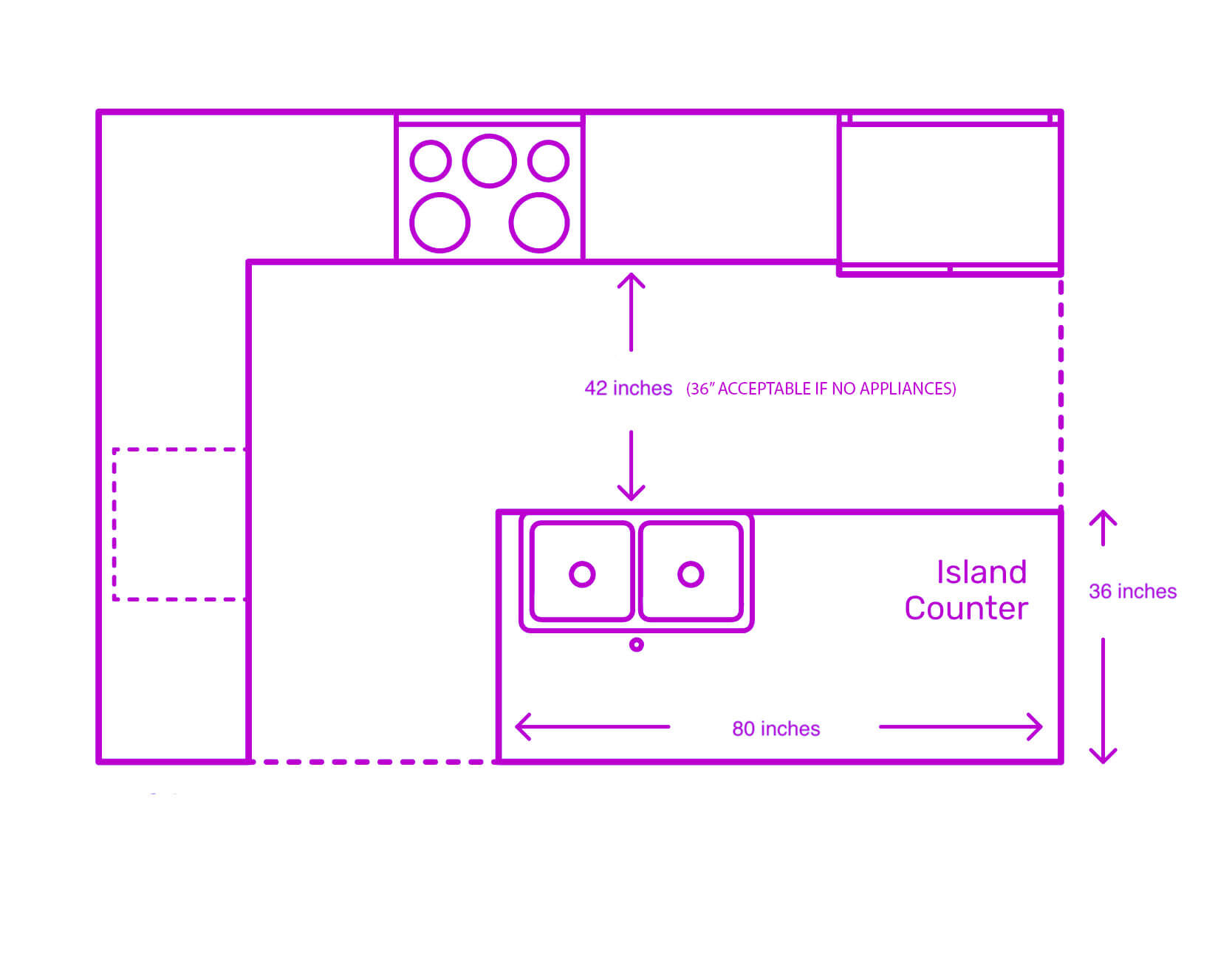A kitchen island with a sink is a fantastic addition to any kitchen, offering extra workspace, storage, and a convenient place for food preparation and cleanup. However, determining the ideal depth of your island is crucial for both functionality and comfort. Planning this aspect carefully can significantly improve your kitchen’s workflow and overall aesthetic. This guide delves into the factors influencing the perfect depth for your kitchen island sink setup, ensuring it meets your specific needs and complements your kitchen space.
Understanding Standard Kitchen Island Depths
While customization is key, understanding standard dimensions provides a solid starting point. Generally, kitchen islands range in depth from 24 inches to 48 inches or even more. The presence of a sink necessitates careful consideration of adequate counter space around it. Let’s examine the typical depths and their suitability for different kitchen configurations.
- 24-30 inches: Suitable for smaller islands, primarily for food preparation and light tasks. May feel cramped with a sink.
- 36-42 inches: A good compromise, offering decent counter space on either side of the sink, especially if designed strategically.
- 48 inches or more: Ideal for larger kitchens, allowing for ample counter space, seating, and even a second sink or appliance.
Factors Influencing Kitchen Island Sink Depth
Several factors play a role in determining the optimal depth for your kitchen island with a sink. Consider these carefully before making a final decision.
- Kitchen Size and Layout: A small kitchen demands a smaller island to avoid overcrowding. Larger kitchens can accommodate deeper islands.
- Sink Size and Placement: A larger sink naturally requires more counter space around it. Consider its dimensions and how it will be positioned within the island.
- Desired Counter Space: How much free counter space do you need for food preparation, plating, or other tasks? Factor this into your depth calculations.
- Seating Requirements: If you plan to include seating at the island, you’ll need to allow for an overhang of at least 12 inches, which adds to the overall depth.
- Traffic Flow: Ensure the island doesn’t obstruct walkways. Maintain at least 36-42 inches of clearance between the island and surrounding cabinets or walls.
Depth and Functionality: Sink Placement is Crucial
The placement of your sink within the island significantly impacts the perceived depth. An offset sink, positioned closer to one edge, can maximize usable counter space on the opposite side. A centered sink requires careful planning to ensure sufficient space on both sides.
Minimum Counter Space Considerations
Regardless of sink placement, aim for at least 18 inches of counter space on one side of the sink and 24 inches on the other. This provides ample room for food preparation, dish drying, and other tasks.
Kitchen Island Depth Comparison Table
| Depth Range (inches) | Suitable Kitchen Size | Pros | Cons |
|---|---|---|---|
| 24-30 | Small | Space-saving, suitable for basic tasks | Limited counter space, may feel cramped with sink |
| 36-42 | Medium | Good balance of counter space and functionality | May require careful sink placement |
| 48+ | Large | Ample counter space, ideal for multiple users and tasks | Requires significant kitchen space, can be costly |
FAQ: Kitchen Island Depth and Sinks
- What is the minimum depth for a kitchen island with a sink?
- The absolute minimum depth is around 24 inches, but 36 inches is generally recommended for comfortable use.
- How much overhang is needed for seating at a kitchen island?
- At least 12 inches of overhang is recommended for comfortable legroom.
- Does the sink type affect island depth?
- Yes, larger sinks like farmhouse sinks require more counter space and therefore a deeper island.
- How do I determine the best depth for my kitchen island?
- Carefully consider your kitchen size, sink size, desired counter space, seating requirements, and traffic flow.
- Can I have an island that’s deeper on one side than the other?
- Yes, multi-level islands can be a great design choice, allowing for varying depths for different functions.
Choosing the right depth for your kitchen island with a sink is a critical decision that directly impacts its functionality and your overall kitchen experience. By carefully considering factors like kitchen size, sink dimensions, desired counter space, and seating needs, you can find the perfect balance. Remember that planning and proper measurements are key to avoiding costly mistakes. Don’t hesitate to consult with a kitchen designer to get personalized advice tailored to your specific space and needs. Ultimately, a well-designed kitchen island with a sink will not only enhance your kitchen’s aesthetics but also significantly improve its efficiency and usability.

